This post may contain ads and affiliate links and we may earn a small commission when you click on the links at no additional cost to you. As an Amazon Affiliate, we earn from qualifying purchases. You can read our full disclaimer here.
Poodle Shedding: Understanding Your Curly Companion’s Coat
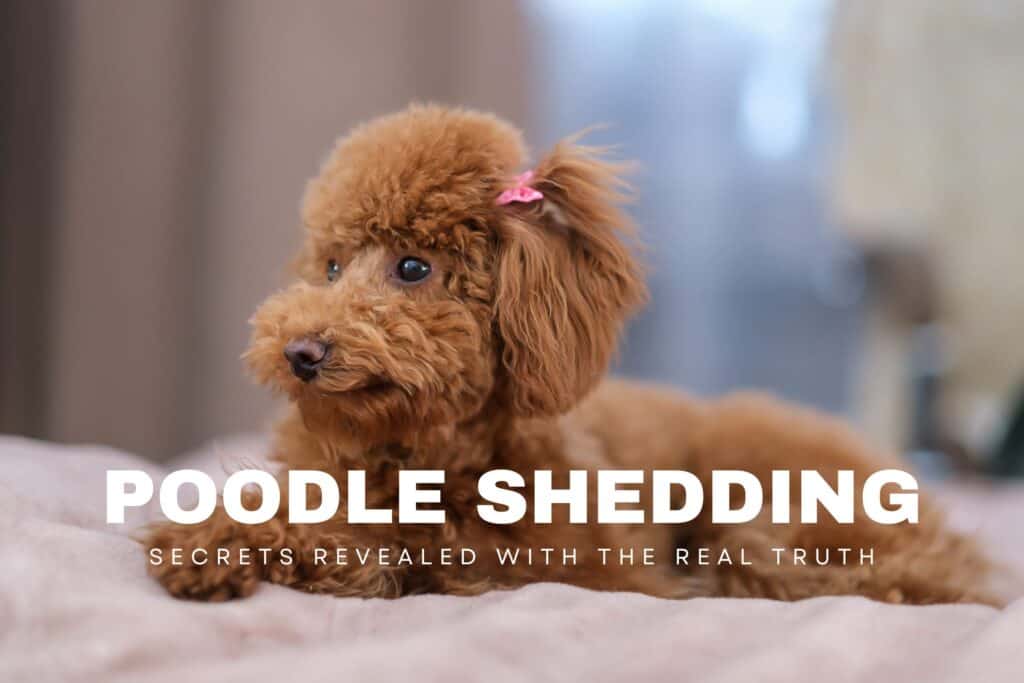
Poodle shedding is a common concern for potential and current poodle owners.
Shedding is a natural process in which dogs lose old or damaged hair, and it can vary greatly from breed to breed.
Poodles are often celebrated for their unique coat, which is composed of dense, curly hair. The texture and growth cycle of their hair results in a very minimal shedding process.
This characteristic makes Poodles an ideal choice for people with allergies or those who prefer a cleaner home environment without dog hair on furniture and clothing.
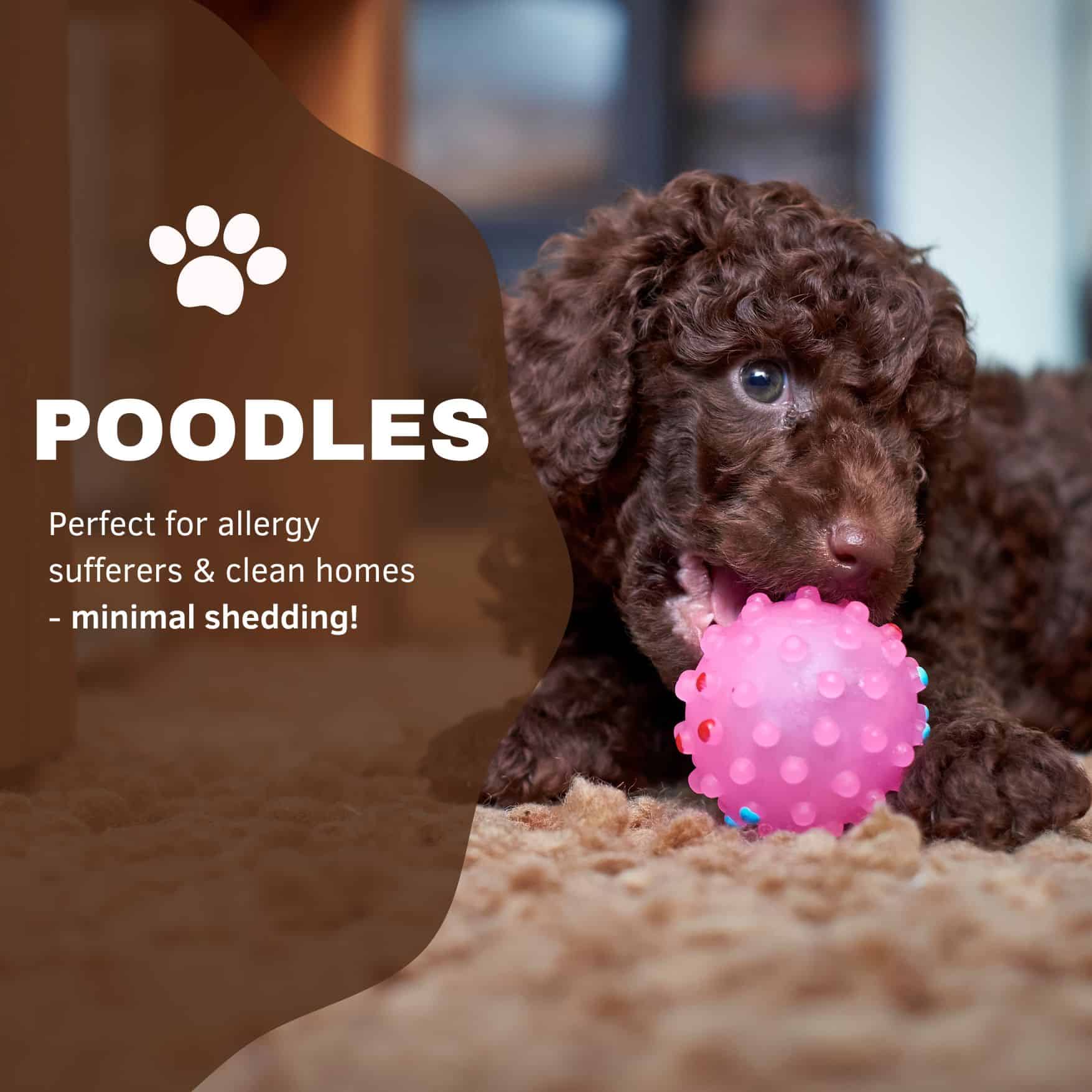
Understanding the grooming needs of a Poodle is essential, as their coat requires regular maintenance to prevent matting and maintain overall health.
Regular brushing and professional grooming are crucial for keeping their coat in good condition, which can also reduce the already minimal amount of hair shed around your home.
Good grooming habits, combined with a proper diet, can contribute to a healthy coat and skin, minimizing shedding and ensuring that your poodle looks and feels great.
Understanding Poodle Shedding
Before you begin brushing your Poodle, it’s important to understand its shedding patterns and the growth cycle of its hair.
Poodles are known to shed less than many breeds, but like all dogs, they do lose some hair.
Shedding Basics
Poodles have a unique coat that is often described as hair rather than fur.
This hair has a tendency to curl and mat instead of falling out freely onto your floor or furniture.
Due to this, many people believe that Poodles don’t shed, but in fact, they do; it’s just less noticeable because their shed hair gets caught in the surrounding curls.
Shedding in Poodles can be influenced by factors such as diet, health, and the environment.
- Diet: Proper nutrients can help maintain a healthy coat that sheds less.
- Health: Illnesses can increase shedding, as can stress.
- Environment: Seasonal changes can affect the amount of shedding.
Hair Growth Cycle: Your Poodle’s hair goes through a growth cycle, including:
- Anagen phase: New hair grows.
- Catagen phase: Hair growth slows and the hair follicle shrinks.
- Telogen phase: Hair growth stops, and the hair remains until it eventually falls out or is brushed out.
Poodle Shedding and Hair Growth Cycle
Understanding the hair growth cycle of Poodles will help you manage their coat. The cycle consists of three stages which each strand of hair will go through:
- Anagen Phase: This is the active growth stage where your Poodle’s hair follicles are pushing out new hair. Healthy Poodles have most of their hair in this phase at any given time, contributing to a full, fluffy coat.
- Catagen Phase: The transition stage is where the hair stops growing, and the follicle begins to close. Few hairs are in this stage at any moment, which helps maintain the coat’s density.
- Telogen Phase: In this resting phase, old hair is preparing to shed. It’s the least active phase for hair follicles, but essential for the natural renewal of the coat.
By managing your Poodle’s grooming routine, you can help control the amount of dead hair within the coat and reduce matting.
Regular brushing is essential to remove hair that is in the telogen phase and to stimulate new growth in the anagen phase.
Poodle Shedding and Coat Characteristics
Your Poodle’s coat is distinct with specific characteristics that contribute to their popularity and suitability for people with allergies.
Coat Types and Variations
Poodles are renowned for their unique coat, which is dense, curly, and soft. They possess a single coat, lacking an undercoat which is typical in double-coated breeds.
The single-coat structure minimizes Poodle shedding, making it less noticeable compared to other dogs.
A Poodle’s coat comes in three varieties based on the size of the dog:
- Toy Poodles: Similar dense and curly coats but on a smaller scale
- Miniature Poodles: Carry a medium-sized, but equally luxurious, curly coat
- Standard Poodles: Often have the most pronounced curls due to their larger size
Over time, a Poodle’s coat changes. Puppies have a softer and wavier puppy coat, which will transition into a denser adult coat as they mature.
Regular grooming is crucial to keep their coat in top condition and to manage the minimal shedding.
Hypoallergenic Qualities
Poodles are often recommended for individuals with allergies due to their hypoallergenic properties.
Their single-layer curly coat acts as a natural barrier, trapping dander and reducing the chances of an allergic reaction.
- Hypoallergenic Dog Breed: The Poodle is considered one of the top hypoallergenic dogs, well-suited for allergy sufferers.
- Dander: Less shedding means reduced dander in your living spaces, which can be the primary cause of allergies.
Remember, “hypoallergenic” does not mean completely allergy-free.
However, your Poodle, with its hypoallergenic coat, offers you a strong chance of enjoying a pet with significantly reduced allergen levels.
Regular grooming is essential to maintain the hypoallergenic qualities, including brushing and possibly professional grooming, to keep the coat in optimal condition.
Factors Affecting Shedding in Poodles

Poodles have a unique coat that requires special attention to manage shedding. Understanding the factors that influence shedding can help you maintain your Poodle’s coat properly.
Age and Shedding Patterns
When your Poodle is a puppy, they will have a soft, wavy coat that will eventually give way to their adult coat. The transition typically occurs around 8 to 12 months of age.
During this time, hair loss is more noticeable as the puppy coat sheds to make room for the adult coat.
Adult Poodles generally shed minimally due to their single-layered coat, but they will still shed somewhat, especially without regular grooming.
Impact of Diet and Nutrition
Your Poodle’s diet greatly affects the health of its coat.
Ensure your Poodle’s diet includes the following key nutrients:
- Protein: Essential for healthy fur growth.
- Vitamins: Such as vitamins A and E, support skin health.
- Omega-3 fatty acids: Promote a shiny coat and reduce skin inflammation.
A lack of these nutrients can lead to nutritional deficiencies, resulting in a dull coat and increased shedding.
Make sure you feed your Poodle a well-balanced diet that meets their nutritional needs to maintain optimal skin and coat health.
Health Disorders Leading to Shedding
Several health issues can cause your Poodle to shed excessively. It’s important to recognize and address these conditions early:
- Hormonal imbalances: Conditions such as hypothyroidism or Cushing’s disease affect the coat’s condition, leading to hair loss.
- Infections: Skin infections can disrupt the normal hair growth cycle, resulting in shedding.
- Sebaceous adenitis: An inherited skin disease prevalent in Poodles, leading to hair loss and dry, scaly skin.
- Stress: High levels of stress impact your Poodle’s overall health, including increased shedding.
Regular veterinary check-ups are crucial to identifying and managing any health concerns that might lead to abnormal shedding.
Grooming Best Practices for Poodle Shedding
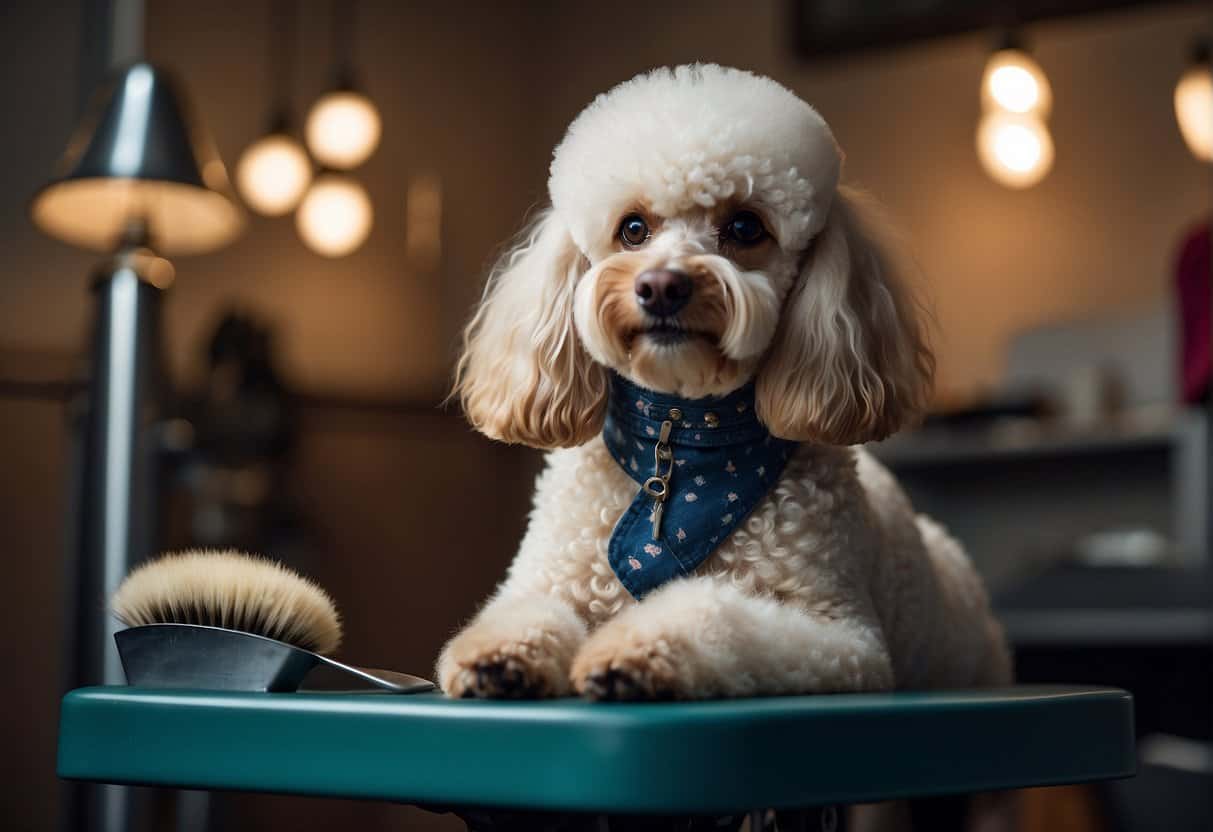
Proper grooming is essential for maintaining your Poodle’s coat in top condition, effectively managing shedding, and preventing matting and tangles.
Regular Brushing and Combing
Brush your Poodle daily to remove dead hair and prevent tangles.
Start with a slicker brush to gently remove loose fur and work through any mats. Follow with a comb to ensure all the smaller tangles are addressed.
For best results, brush all the way down to the skin, but be gentle to avoid irritation.
- Daily Brushing: Use a slicker brush followed by a fine-toothed comb.
- Mat Prevention: Brush thoroughly to avoid mats and tangles forming.
Bathing and Shampoo Recommendations
Bathe your Poodle every 3-6 weeks to keep their hair clean and reduce shedding.
Use a mild shampoo to protect their skin and coat. If your Poodle has sensitive skin, consider a medicated shampoo, and always rinse thoroughly to prevent residue.
- Frequency: Bathe every 3-6 weeks.
- Shampoos: Use a mild or medicated shampoo depending on your dog’s skin.
- Bathing Process: Rinse thoroughly to ensure no shampoo remains in their fur.
Preventing and Managing Common Poodle Skin Problems
Your Poodle’s skin health is crucial for preventing hair loss and infections.
By understanding and addressing skin conditions, you can keep your Poodle’s coat lustrous and minimize shedding.
Skin Conditions and Infections
Common Skin Issues: Poodles are prone to various skin problems. These include bacterial infections, parasites, and sebaceous adenitis.
Recognizing these conditions early is necessary for effective treatment.
- Bacterial Infections: Frequent scratching or red, inflamed skin may indicate a bacterial infection.
- Parasites: Ticks, fleas, and mites can cause severe itching, leading to more serious skin infections.
- Sebaceous Adenitis: An inherited skin disease that can cause scaly skin and hair loss, particularly in Standard and Toy Poodles.
Prevention and Treatment Strategies:
- Regular Bathing: This removes dander and decreases the likelihood of skin infections. Use a gentle shampoo to avoid skin irritation.
- Healthy Diet: Incorporate supplements rich in Omega-3 and Omega-6 fatty acids to promote skin health and improve blood circulation.
- Prompt Veterinary Care: If you notice any signs of skin conditions, seek immediate veterinary assessment. Timely treatment can prevent complications.
Strategies for Reducing Shedding through Skincare
Minimizing Dander and Matting
Reducing shedding involves maintaining your Poodle’s skin health. This is important because dander can contribute to hair loss and matting.
Maintaining Skin Health:
- Regularly check your Poodle’s skin for dryness or irritation.
- Provide a balanced diet with omega-3 fatty acids to promote healthy skin.
- Bathe your Poodle using hypoallergenic shampoo to reduce skin irritation.
- Hydrate your Poodle with fresh water to maintain skin moisture.
Routine Grooming:
- Brush your Poodle daily to remove dead hair and prevent tangles.
- Use a suitable brush that reaches the undercoat without hurting the skin.
- Trim hair around paws and ears to prevent matting.
- Schedule professional grooming every 4-6 weeks for thorough care.
Environment and Stress Factors
Manage Stress:
- Provide a quiet, dedicated space for your Poodle to relax.
- Engage your Poodle in regular exercise and playtime to reduce anxiety.
- Avoid sudden changes in routine that may stress your pet.
- Introduce new environments and people gradually to avoid overwhelming your Poodle.
Clean Living Space:
- Vacuum and clean floors and pet areas regularly to remove dander and hair.
- Wash your Poodle’s bedding, toys, and accessories frequently.
- Use air purifiers to reduce airborne allergens in your Poodle’s environment.
- Avoid smoking or using strong chemicals near your Poodle to prevent respiratory issues and skin reactions.
Other Influencing Factors and Considerations about Poodle Shedding
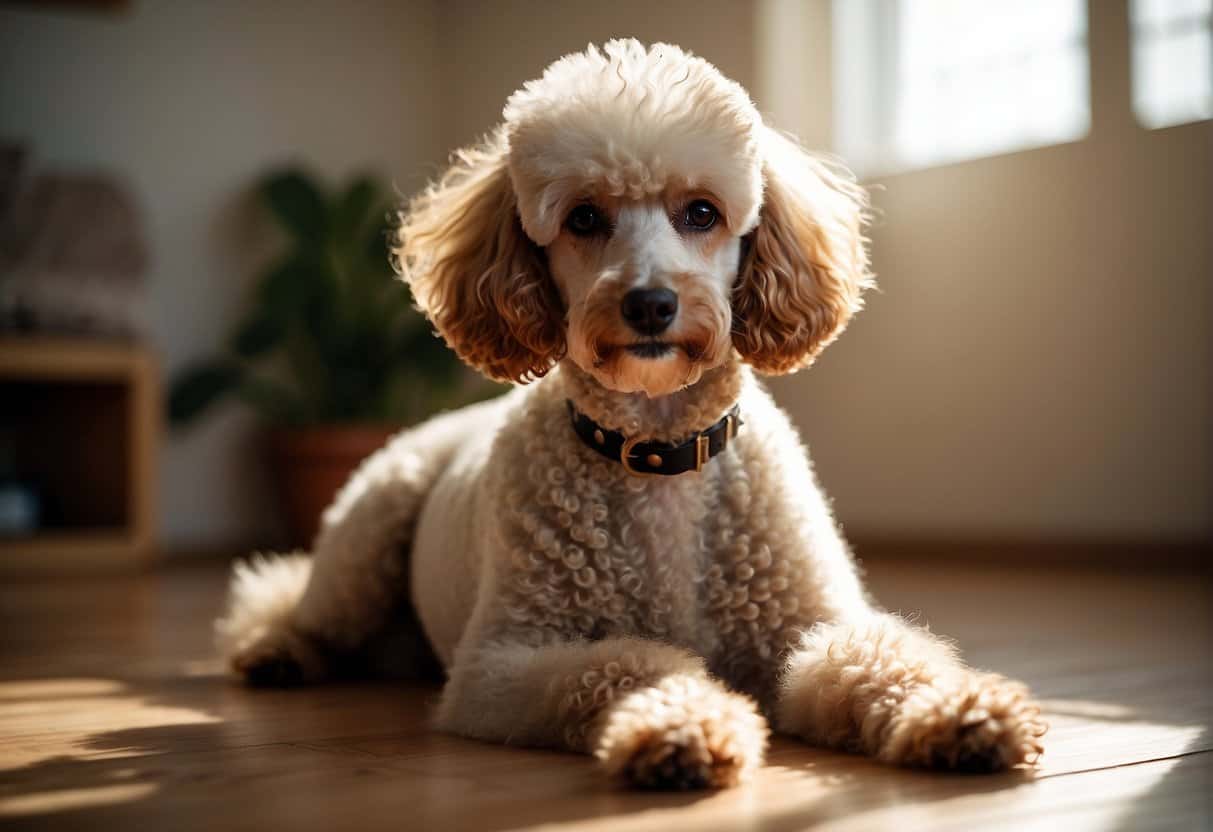
Understanding the influence of various external and genetic factors on Poodle shedding is critical. This section explores how the environment, genetics, and breed comparisons impact shedding patterns.
Environmental and Lifestyle Effects on Poodle Shedding
Your Poodle’s shedding can be affected by their living conditions and routines.
- Stress: High-stress levels can lead to increased shedding.
- Exercise: Active Poodles may shed more due to increased circulation and body movement.
- Climate: Poodles living in varying temperatures can experience changes in shedding as their coats adapt.
- Indoor vs. Outdoor: Indoor Poodles generally shed less as they are not exposed to the natural elements.
Shedding and Genetic Predilection
Each Poodle type, from standard to toy, may have distinct shedding tendencies due to their genetics.
- Hormone Imbalances: Can affect the rate of shedding.
- Coat Color and Texture: Certain coat styles may shed differently.
- Matting: Poodles with curly fur can develop matted hair if not groomed regularly, hiding shed fur.
Comparative Analysis with Other Breeds
When compared to other breeds, Poodles are often considered hypoallergenic dogs because they typically shed less fur.
- Golden Retrievers and Huskies: Shed more due to their thick double coats.
- Toy and Miniature Poodles: Generally shed less than the larger Standard Poodles.
- Cats vs. Dogs: Poodles, in comparison to many cat breeds, typically shed less and produce fewer allergens.
Check out our post comparing Golden Retrievers and Poodles!
Conclusion to Poodle Shedding
When assessing a Poodle’s shedding, it’s important to remember that they are among the breeds that are low-shedding.
Your Poodle’s hair loss might be so minimal that it’s barely noticeable.
However, no dog is completely non-shedding, and regular grooming is key to maintaining their coat and minimizing any hair in your living space.
You can expect:
- Minimal shedding: Compared to other dogs, your Poodle will likely shed substantially less.
- Regular grooming: Brushing your Poodle’s coat several times a week helps prevent matting and controls shedding.
- Seasonal differences: Although mostly constant, shedding can slightly increase during spring and fall.
It’s important to adhere to a consistent grooming routine, including:
- Brushing
- Bathing
- Professional grooming visits
A structured grooming routine not only keeps shedding in check but also ensures your Poodle’s coat stays healthy and vibrant.
If you notice sudden or severe shedding, consult with a veterinarian to rule out any underlying health issues.
By selecting a Poodle, you’ve chosen a companion with a manageable level of shedding, suited for most lifestyles and family situations.
Proper care and regular maintenance will keep your home relatively free of dog hair and your Poodle looking its best.
-
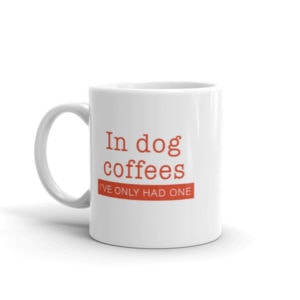
Coffee Mug – In Dog Coffees I’ve Only Had One
$11.95 – $14.95 Select options This product has multiple variants. The options may be chosen on the product page
